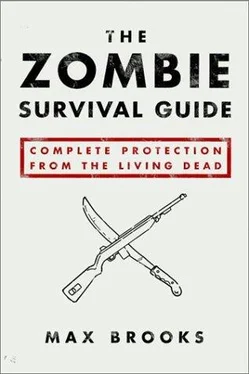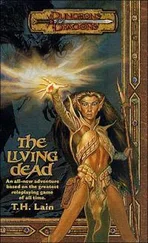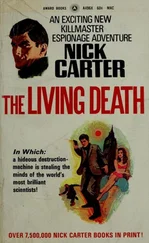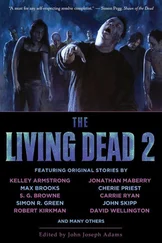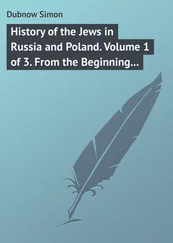Max Brooks - The zombie survival guide - complete protection from the living dead
Здесь есть возможность читать онлайн «Max Brooks - The zombie survival guide - complete protection from the living dead» весь текст электронной книги совершенно бесплатно (целиком полную версию без сокращений). В некоторых случаях можно слушать аудио, скачать через торрент в формате fb2 и присутствует краткое содержание. ISBN: , Издательство: Three Rivers Press, Жанр: Юмористическая фантастика, Юмористическая проза, на английском языке. Описание произведения, (предисловие) а так же отзывы посетителей доступны на портале библиотеки ЛибКат.
- Название:The zombie survival guide : complete protection from the living dead
- Автор:
- Издательство:Three Rivers Press
- Жанр:
- Год:неизвестен
- ISBN:1400049628
- Рейтинг книги:3 / 5. Голосов: 1
-
Избранное:Добавить в избранное
- Отзывы:
-
Ваша оценка:
- 60
- 1
- 2
- 3
- 4
- 5
The zombie survival guide : complete protection from the living dead: краткое содержание, описание и аннотация
Предлагаем к чтению аннотацию, описание, краткое содержание или предисловие (зависит от того, что написал сам автор книги «The zombie survival guide : complete protection from the living dead»). Если вы не нашли необходимую информацию о книге — напишите в комментариях, мы постараемся отыскать её.
The Zombie Survival Guide
The zombie survival guide : complete protection from the living dead — читать онлайн бесплатно полную книгу (весь текст) целиком
Ниже представлен текст книги, разбитый по страницам. Система сохранения места последней прочитанной страницы, позволяет с удобством читать онлайн бесплатно книгу «The zombie survival guide : complete protection from the living dead», без необходимости каждый раз заново искать на чём Вы остановились. Поставьте закладку, и сможете в любой момент перейти на страницу, на которой закончили чтение.
Интервал:
Закладка:

The civilian ax can easily crush a zombie’s skull, smashing through bone and brain in one swing. Decapitation is equally easy, which is why the ax has been the favored tool of executioners for centuries. Connecting with a moving head, however, might be difficult. Furthermore, if the swing ends in a total miss, you might be taken off balance.
The smaller, one-handed hatchet is a good weapon of last resort. If you find yourself cornered, and larger weapons are useless, a hatchet blow will more than take care of an attacker.
The sword is the ideal edged weapon, but not every kind will suffice. Foils, rapiers, and similar fencing weapons are not suited for slicing. Their only possible use would be a direct stab through the eye socket followed by a quick swirling action through the brain. This motion, however, has been accomplished only once, by a trained swordsman, and is therefore not recommended.
Single-handed long swords allow you a free hand for other tasks such as opening a door or defending your body with a shield. Their only drawback is the lack of swinging power. One arm may not have the strength to slice through the thick cartilage between bones. Another drawback is its user’s notorious lack of accuracy. Scoring a flesh wound anywhere on the body of a living opponent is one thing. Making an exact, clean chop through the neck is something else altogether.
Double-handed swords could be considered the best in their class, providing the strength and accuracy for perfect decapitation. Of this type, the Japanese Samurai Katana ranks first. Its weight (three to five pounds) is perfect for long-term conflicts, and its blade can sever the toughest organic fiber.
In tight quarters, shorter blades hold the advantage. The Roman Gladius is one choice, although combat-ready replicas are hard to find. The Japanese Ninjite boasts a two-handed grip and, in genuine models, renowned tempered steel. Both factors make it a superior weapon. The common machete, because of its size, weight, and availability, is probably your best choice. If possible, find the military type usually sold at Army surplus stores. Its steel tends to be of a higher quality, and its blackened blade helps concealment at night.
3. Miscellaneous Hand Weapons
Spears, pikes, and tridents serve to skewer a zombie, keeping it out of reach but not necessarily scoring a kill. The chance of an eye-socket stab is possible, but remote. The medieval European halberd (an ax-spear hybrid) may serve as a chopping weapon but, again, requires great amounts of skill and practice to accomplish a decapitating blow. Other than using them as bludgeons, or keeping your attacker at a distance, these weapons serve little purpose.
Morning stars or “flails,” a spiked ball chained to a rod, do basically the same damage as a crowbar, albeit in a more dramatic way. The owner swings the rod in a wide, circular motion, providing enough momentum to bring the ball crashing through the skull of his or her opponent. Using this weapon takes considerable skill, and it is therefore not recommended.
The medieval European mace serves the same function as the standard household hammer but without benefit of the latter’s practical uses. A mace cannot pry open a door or window, drive a chisel, or hammer a nail. Attempting such an act could result in accidental injury. Therefore, carry this medieval weapon only when no alternative is available.
Knives are always useful, serving a variety of functions in a range of situations. Unlike a hatchet, they can kill a zombie only when the blade is stabbed through the temple, eye socket, or base of the skull. On the flip side, knives almost always weigh less than hatchets and, therefore, are better if you are on the move. When choosing a knife, make sure the blade is no more than six inches long and always smooth. Avoid serrated knives and saw-blade combinations found in survival knives, as they tend to become lodged in their victims. Imagine yourself stabbing one zombie through the temple and turning to engage the other three ghouls but not being able to retrieve your blade.
The trench spike is, without a doubt, the best compact anti-zombie weapon on earth. It is a combination of a seven-inch steel spike for a blade and brass knuckles for a handle. It was developed during the vicious hand-to-hand combat of World War I, where soldiers killed each other in trenches no wider than a few feet. Specifically, it was designed to stab downward, through an enemy’s steel helmet. You can imagine how effective this weapon would be against a zombie. The user could stab easily through a zombie’s skull, withdraw cleanly and quickly, then turn to either brain another zombie or, at the very least, knock one over with a brass-knuckle punch to the face. Original models are extremely rare, with barely a few remaining in museums and the homes of private collectors. However, if accurate, detailed schematics can be found, have one or perhaps two combat-ready, stress-tested replicas made. They will be an investment you will never regret.
The Shaolin Spade
This weapon bears special mention in the anti-ghoul arsenal. It may appear unconventional: a six-foot hardwood staff with a flat, bell-shaped blade on one end and an outward-facing crescent blade on the other. Its roots date back to a bronze-bladed agricultural tool used during the Chinese Shang Dynasty (1766–1122 B.C.E.). When Buddhism migrated to China, the spade was adopted by Shaolin monks as both tool and weapon. On several occasions, it has proven to be surprisingly effective against the living dead. Thrusting forward with either blade will produce instant decapitation, while its length provides complete safety for the user. This length does make it impractical for indoor combat, and it should therefore be avoided in those situations. In open spaces, however, nothing combines the safety of a spear with the killing power of a katana sword like the Shaolin spade.

A variety of other hand weapons exist around the world, and space does not permit the author to discuss each one individually. If you discover an implement or tool that you think might make a good weapon, ask yourself these questions:
1. Can it crush a skull in one blow?
2. If not, can it decapitate in said blow?
3. Is it easy to handle?
4. Is it light?
5. Is it durable?
Questions 3, 4, and 5 will have to depend on your present situation. Questions 1 and 2 are essential!
4. Powertools

Popular fiction has shown us the awesome, brutal power of the chainsaw. Its lightning-quick, rotating teeth can easily slice through flesh and bone, making the strength and skill required for manual weapons unnecessary. Its roar might also give the owner a much-needed psychological boost—empowerment in a situation where abject terror is a given. How many horror movies have you seen in which this industrial killing machine has spelled doom for anyone and anything it touched? In reality, however, chainsaws and similar powered devices rank extremely low on the list of practical zombie-killing weapons. For starters, their fuel supply is finite. Once drained, they provide as much protection as a hand-held stereo. Carrying extra fuel or power cells leads to the second inherent problem: weight. The average chainsaw weighs ten pounds, compared to a two-pound machete. Why increase the chances of exhaustion? Safety must also be considered. One slip, and the spinning teeth might be slicing through your skull just as easily as your enemy’s. Like any machine, another problem is noise. A chainsaw’s distinctive roar, even if running for just a few seconds, will be enough to broadcast to every zombie within earshot, “Dinner is served!”
Читать дальшеИнтервал:
Закладка:
Похожие книги на «The zombie survival guide : complete protection from the living dead»
Представляем Вашему вниманию похожие книги на «The zombie survival guide : complete protection from the living dead» списком для выбора. Мы отобрали схожую по названию и смыслу литературу в надежде предоставить читателям больше вариантов отыскать новые, интересные, ещё непрочитанные произведения.
Обсуждение, отзывы о книге «The zombie survival guide : complete protection from the living dead» и просто собственные мнения читателей. Оставьте ваши комментарии, напишите, что Вы думаете о произведении, его смысле или главных героях. Укажите что конкретно понравилось, а что нет, и почему Вы так считаете.
